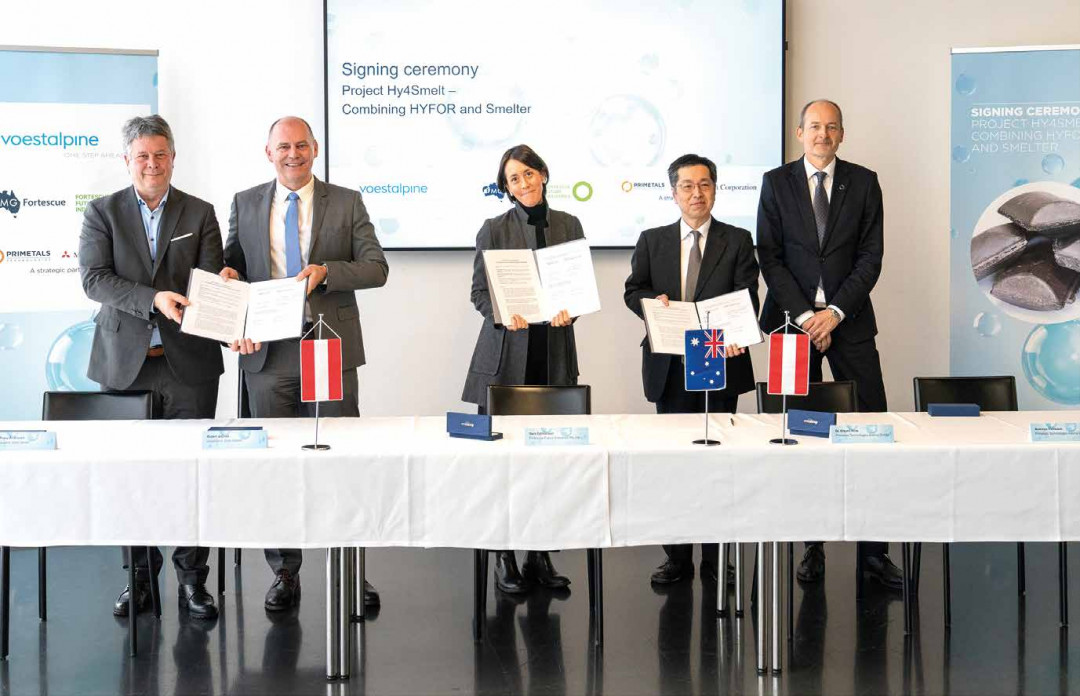
Primetals Technologies, Fortescue and voestalpine are jointly evaluating a breakthrough plant for green iron production. The aim is to develop a prototype of an emission-free industrial-scale plant for the production of hydrogen-based hot metal.
On December 19, Primetals Technologies, together with its strategic partners Mitsubishi Corporation, Fortescue, a global leader in the mining and heavy industries, and globally leading steel and technology group voestalpine, signed a Memorandum of Understanding (MoU). The partnership is aimed at designing and engineering an industrial-scale prototype plant with a new process for net-zero-emission ironmaking at the voestalpine site in Linz, Austria. The collaboration will also investigate the implementation and operation of the plant.
The new ironmaking process will be based on Primetals Technologies’ Hyfor and Smelter solutions. Hyfor is the world’s first direct reduction process for iron ore fines that will not require any agglomeration steps, like sintering or pelletizing. A pilot plant has been in operation since the end of 2021, and Primetals Technologies has run numerous successful test campaigns over the last year including successful trials on Fortescue’s Pilbara iron ore products.
The new Smelter technology from Primetals Technologies is a furnace powered by electrical energy. It is used for melting and final reduction of direct reduced iron (DRI) based on lowergrade iron ores. In that way, it produces alternative green hot metal for the steelmaking plant. The project planning phase will be used to design an industrial-scale prototype plant with a capacity of between three to five tons of green hot metal per hour. It is the first solution to link a hydrogen-based direct reduction plant for iron ore fines with a Smelter.
The main goal of the project planning phase is to develop the basis for decision to realize a prototype plant capable of continuous operation, and then to gain the know-how needed for the next step, a commercial full-scale plant. Another target is to investigate the use of various types of iron ores to produce DRI, hot briquetted iron (HBI), and hot metal and, as a next step, draw conclusions about the individual process steps as well as different combinations of them.
The hydrogen used in the new plant will mainly come from Verbund, voestalpine’s and Austria’s leading renewable energy producer, who operates a proton exchange membrane (PEM) electrolyzer named H2Future. Located in Linz, this plant has a capacity of over six megawatts, and is still the world’s largest of its kind used at a steel plant. The H2Future plant will be upgraded to allow for the compression and storage of hydrogen gas before use in the combined Hyfor and Smelter plant.

